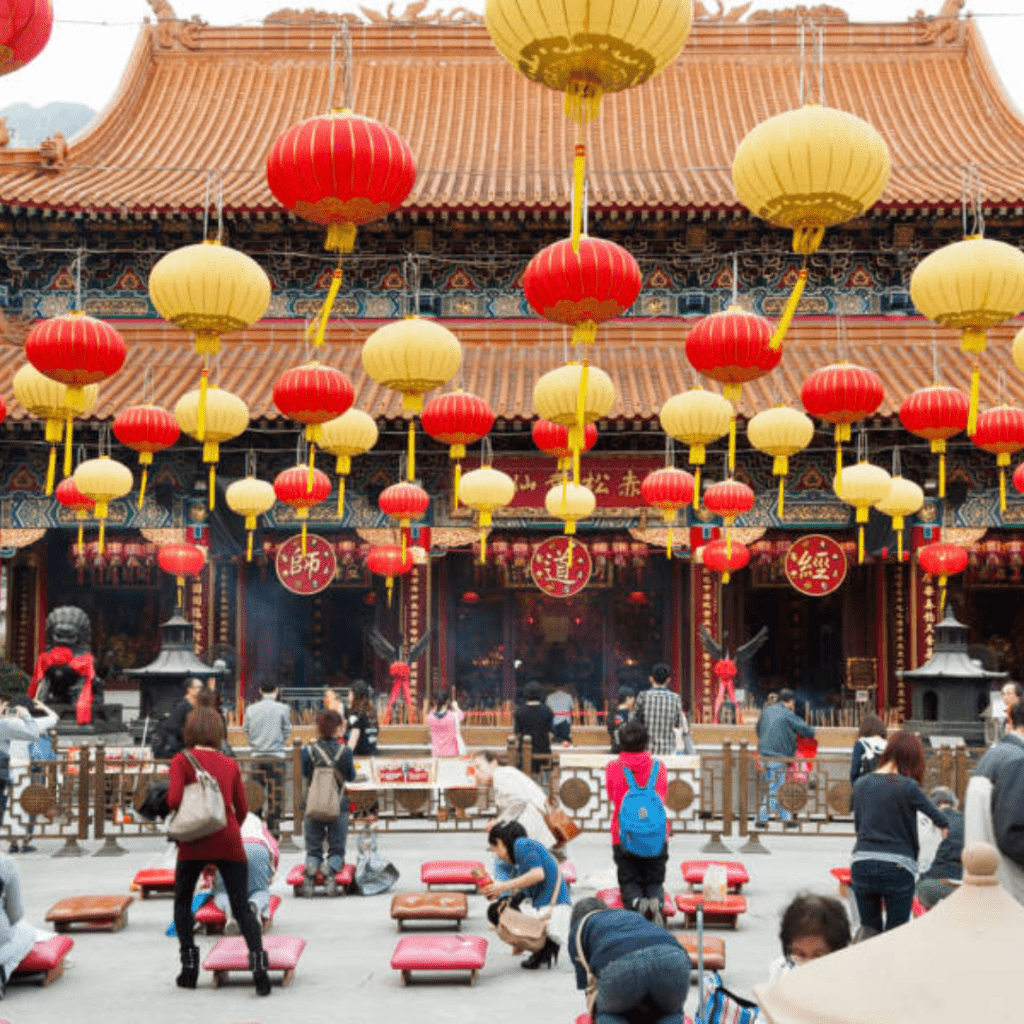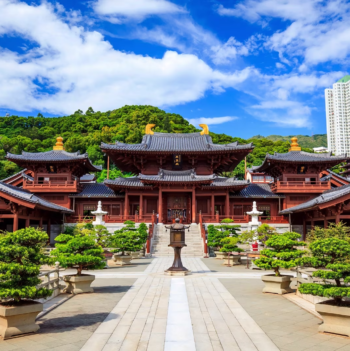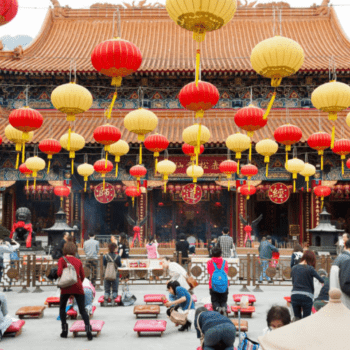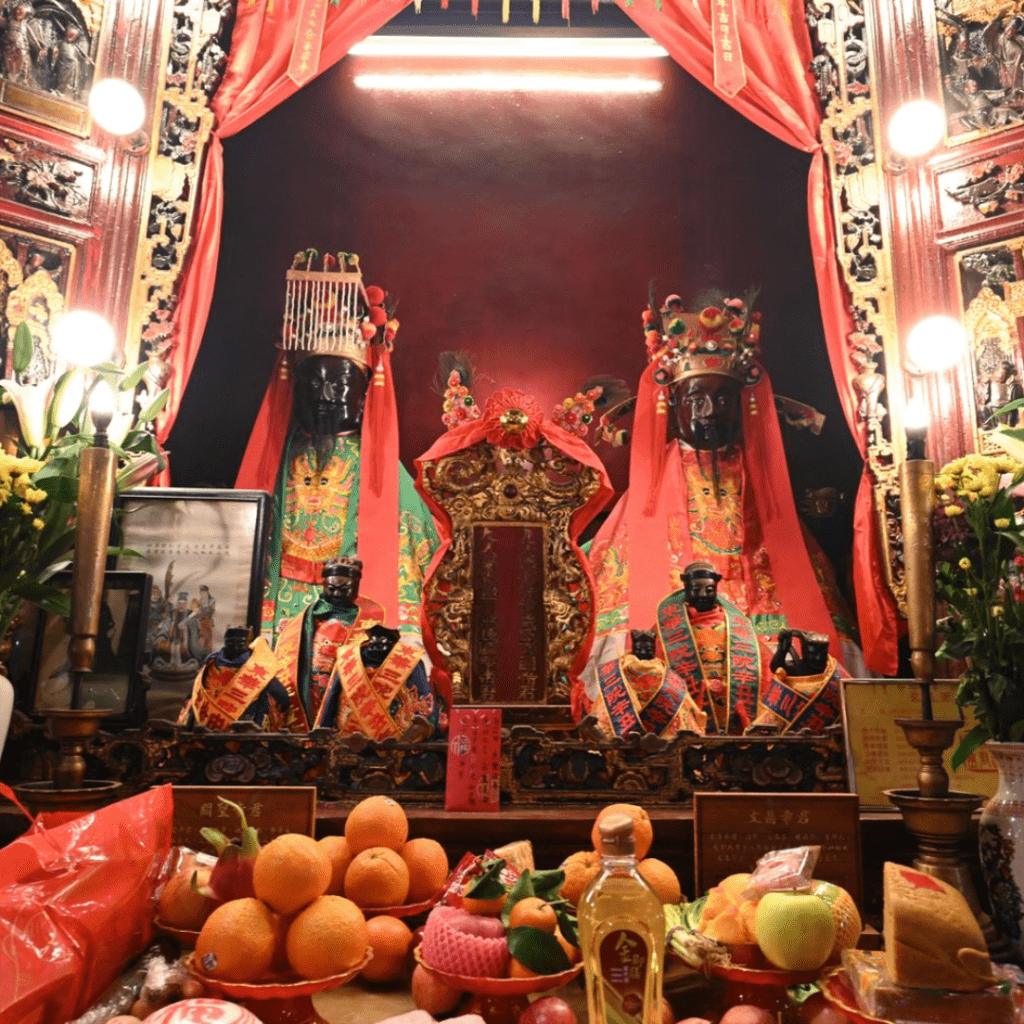Wong Tai Sin Temple is a renowned local temple in Hong Kong and is classified as a Grade 1 historic building. It is dedicated to Wong Tai Sin, a famous Taoist deity from Southern China during the Eastern Jin dynasty. The temple also incorporates deities from Confucianism and Buddhism, such as Confucius and Guanyin, showcasing the harmonious coexistence of the three religions. Now, let’s delve into the early establishment of Wong Tai Sin Temple and explore the esoteric mysteries hidden within its architectural complex.
The history of Wong Tai Sin Temple can be traced back to 1897 when Leung Yam-on and a group of acquaintances experienced a mysterious oracle session in Panyu, Guangdong. They fortuitously received divine guidance from Wong Tai Sin. With Wong Tai Sin’s consent and guidance, the first temple dedicated to Wong Tai Sin was built in Huadai, Guangzhou.
However, due to social unrest and political changes, the Wong Tai Sin Temple in Guangzhou was destroyed in 1912. Leung Yam-on received a divine oracle instruction from Wong Tai Sin, indicating the need to relocate southward. In 1921, he established the Sik Sik Yuen organization and built Wong Tai Sin Temple in the Kowloon City area, taking charge of the temple’s affairs.
The temple’s architecture showcases a unique blend of traditional Chinese palace and temple elements, demonstrating exquisite craftsmanship and architectural expertise. The architectural complex was designed and constructed based on the principles of left dragon and right phoenix, as well as the five elements. The Feiluan Terrace represents gold, the Jing Tang represents wood, the Jade Liquid Pond represents water, the Yu Xiang Pavilion represents fire, and the Reflecting Wall represents earth. It is believed that these elements were incorporated into the design based on divine guidance to ensure the longevity of the temple.
If it’s your first visit to Wong Tai Sin Temple, you may be curious about the practice of divination and fortune-telling. To begin, you must obtain a divination stick from the side of the main hall, which contains a hundred bamboo sticks. Shake the divination stick container until one stick falls out, and the number on the stick corresponds to a piece of paper containing a divinatory scripture, which represents Wong Tai Sin’s response. Additionally, there are two adjacent buildings near the temple where professional fortune-tellers offer divination services. The price for each divination stick is around HKD 20-30, making it affordable for visitors.


If you are interested in learning more about other temples in Hong Kong, remember to download our app, search for the title “The Rich and The Poor: Stories at Man Mo Temple and Kwong Fook”, and you can listen to Professor Cheng May Bo’s free audio guide. Hurry and plan your one-day Man Mo Temple itinerary for the weekend!
Travel route: Man Mo Temple (Fence Wall) → Man Mo Temple (Main Entrance) → Man Mo Temple (Interior) → “Kung Sor” (Exterior) → Kwong Fook (right and Main Entrance) → Kwong Fook (Front Hall) → Kwong Fook (Rear Hall)
Find out more about our Hong Kong Tours and let Storius become your personal tour guide: (https://storiusapp.com/hong-kong-tours/) download our travel app today for self-guided tours!
Top Attractions to Visit
Hong Kong’s Five Ancient Temples: Discovering Prehistoric Religion and Their Rich Cultural Heritage
admin All Articles (Eng), Latest News (Eng), Top Attractions to Visit (Eng), Uncategorized HK, Hongkongtemple, HungShingTemple, LoPanTemple, PakTaiTemple, TinHauTemple
Hong Kong is renowned as an international metropolis that harmoniously blends Eastern and Western cultures. Amidst its colonial history, traces of indigenous culture and beliefs also persist among the people of Hong Kong. Prior to becoming a British colony, the local residents sustained their livelihood through fishing, stone-cutting, and agriculture. They also sought solace in […]
Divination Culture and Ancient Traditions: Exploring the Historical and Esoteric Secrets of Wong Tai Sin Temple
admin All Articles (Eng), Latest News (Eng), Top Attractions to Visit (Eng) 中式廟宇, 中式建築, 佛教, 免費語音導賞, 宗教, 民間信仰
Wong Tai Sin Temple is a renowned local temple in Hong Kong and is classified as a Grade 1 historic building. It is dedicated to Wong Tai Sin, a famous Taoist deity from Southern China during the Eastern Jin dynasty. The temple also incorporates deities from Confucianism and Buddhism, such as Confucius and Guanyin, showcasing […]






